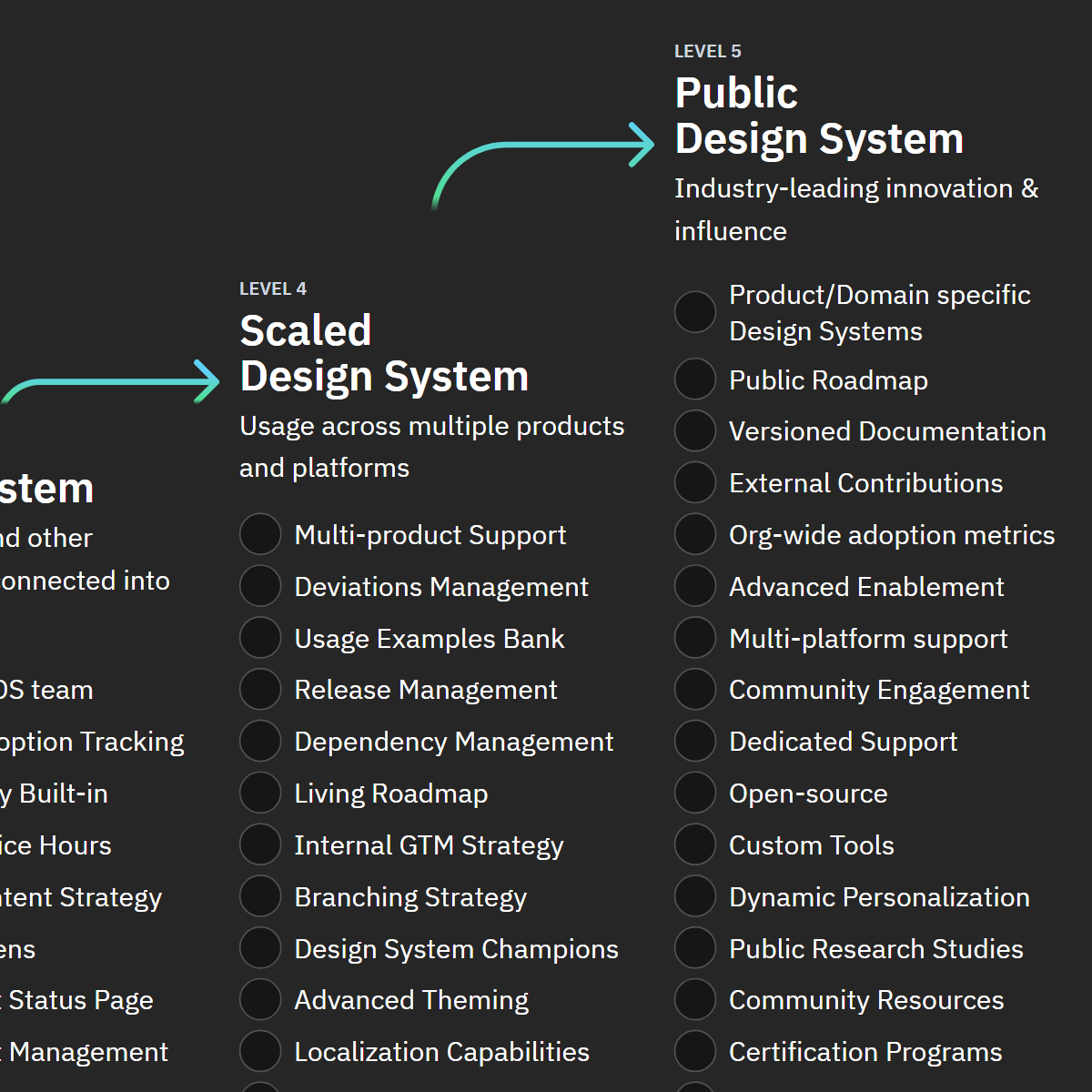Design system maturity models are key to understanding where you're at

There are many design system maturity models out there, but what are they? In a nutshell, design system maturity models help you measure where you're at versus where you're going, and what's appropriate for your scale. It helps designers communicate their needs and user needs to stakeholders, including leadership, engineering, and marketing teams.
My favorite model so far is Infa.ai's design system maturity model based on detailed outcomes. It breaks things down into stages from basic starting point to team shared resources to scale across multiple resources, teams, and projects.
I also like the design system maturity model from Marcelo Sumers and John Gully which is framed more around responsibilities. It goes from inconsistent to static, manual, automatic, and finally governed.
There's also Sparkbox's design system maturity model based on adoption. How many stakeholders are using your design system? Is it company wide, or just a few people?
Design system maturity can be measured in many ways, but my favorite method is by measuring outcomes.

About the author
Brandon is an engineer who loves leading, planning, designing, growth, analytics, and marketing.
Five books everyone should read:
Are Your Lights On, The First 90 Days, Elements of Persuasion, Humans vs Computers, When: The Scientific Secrets of Perfect Timing
Favorite quotes:
- Everybody has a plan until they get punched in the face.
- If a park ranger warns you about the bears, it ain’t cause he’s trying to keep all the bear hugs for himself.
- A designer knows he has achieved perfection not when there is nothing left to add, but when there is nothing left to take away.